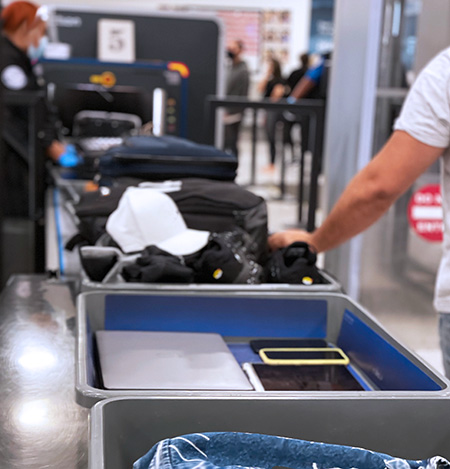Reports of chaotic passenger experiences at airports around the world abound. Whether it’s global airports sounding the alarm and requesting concessions from airlines, images of baggage piling up, or mass cancellations, operations has been challenging across the board.
In contrast, the data indicates the US may have hit a bottom, at least on misery.
Airlines in the US have pointed the finger at the industry’s structural challenges: the confluence of a tight labor market from tip to tail and the return to pre-pandemic flight volume. Indeed, single-aisle aircraft flying — the Boeing 737s and Airbus A320s that make up the bulk of fleets — is up some 1% now over 2019 levels in the US, according to data from Ascend by Cirium. Operational cancellations and degraded on-time performance has been the norm, to say nothing of very long queues at security on outbound flights and customs and immigration on the return.
Flights per day from the 20 Busiest Airports in the US
Reports abound of long passenger security queues, mostly at the largest airports in the US — those 20 or so airports from Atlanta (the busiest) to Philadelphia that are pushing through the highest volume of passengers and flights. The schedules from Diio, Cirium’s airline planning system, show that peak flying at those airports this summer took place Friday, July 15, 2022, where around 12,100 flights were scheduled. From May 1 to August 31, 2022, the average number of flights per day from those same airports is around 11,600. The system has largely been tested — with consistent flight activity from mid-to-late June 2022, hitting a mid-month peak and dropping off into late August 2022. That’s not different from other years.
Passenger throughput at TSA checkpoints

When it comes to chaotic airport scenes seen on TV, couple the above schedule data with TSA checkpoint data. The Bureau of Transportation Statistics data indicates that the highest passenger security throughputs so far this year — and for the summer travel periods in 2019 — are from around June 30 to July 15. The data show that the peak so far this summer was 2.49 million passengers on July 1, 2022. This compares to 2.795 million passengers on July 3, 2019. In the US, the airlines had a comparatively quiet July 4, 2022, from an operational perspective. Accordingly, barring weather disruption gumming up the works, TSA security throughput should also peak mid-July.
What about an August meltdown? The Impact of rising fares
US domestic fares are up 16% for May 2022 compared with May 2019, according to Cirium’s latest data. Those same fares were up 8% for May 2022 versus April 2022. In contrast, fares only jumped 2% from May to April 2019. Each is a significant increase, owing to rising fuel prices, geopolitical issues and reduced capacity. In the subsequent period between May 2022 and the time of writing, jet fuel prices further increased by 20%.
With a four-week booking window and rising fares, passengers likely made a go-or-no-go decision on their summer 2022 travel by early to mid-June 2022 — and probably during a time when those same passengers would have seen fares increase even further.
As fares rise, demand tightens, so only those wanting to travel at decidedly higher fares will travel. As the summer progresses, these factors translate to lower load factors — meaning less passengers at the airports, and presumably, less chaos.
Flight Cancellations and on-time performance
Perhaps the most compelling indication of the US has passed “peak chaos” is the return to operational normalcy. Flight cancellations and on-time performance in early July 2022 show improvement over July 2019.

For the first half of July 2022, the major US carriers canceled around 0.92% flights – they had canceled 2.2% of their June 2022 flying. But compare July 2022 to July 2019 — these same airlines canceled 1.5% of flights in the pre-pandemic period. This is not indicative of unbridled chaos but the opposite: a return to normalcy.
The same is true for on-time performance. June performance among US domestic carriers was 74% on average. However, the first half of July 2022, those same carriers were 79% on time — an improvement over July 2019 where those carriers were 78% on time. While there were fewer flights flown, the airlines appear to have better aligned their resources closer to pre-pandemic levels.
The airlines already anticipated staffing constraints
Diio Schedule Snapshot shows that the 11 major airlines in the US trimmed their July schedules from approximately 894,000 flights planned as of May 2022, to about 875,000 flights in June 2022 — a reduction of 2%. That said, airlines like Allegiant, trimmed some 17% of their flying schedule, with JetBlue and Delta cutting 5% between the two dates.
Cirium will watch closely to see how disruption plays out this summer. While the data is not predictive, it does indicate a return to a semblance of normalcy. Plus, there’s always the US Thanksgiving holiday — the next big test — to look forward to.
Learn more about Diio by Cirium and Cirium On-Time Performance Reports.

























































